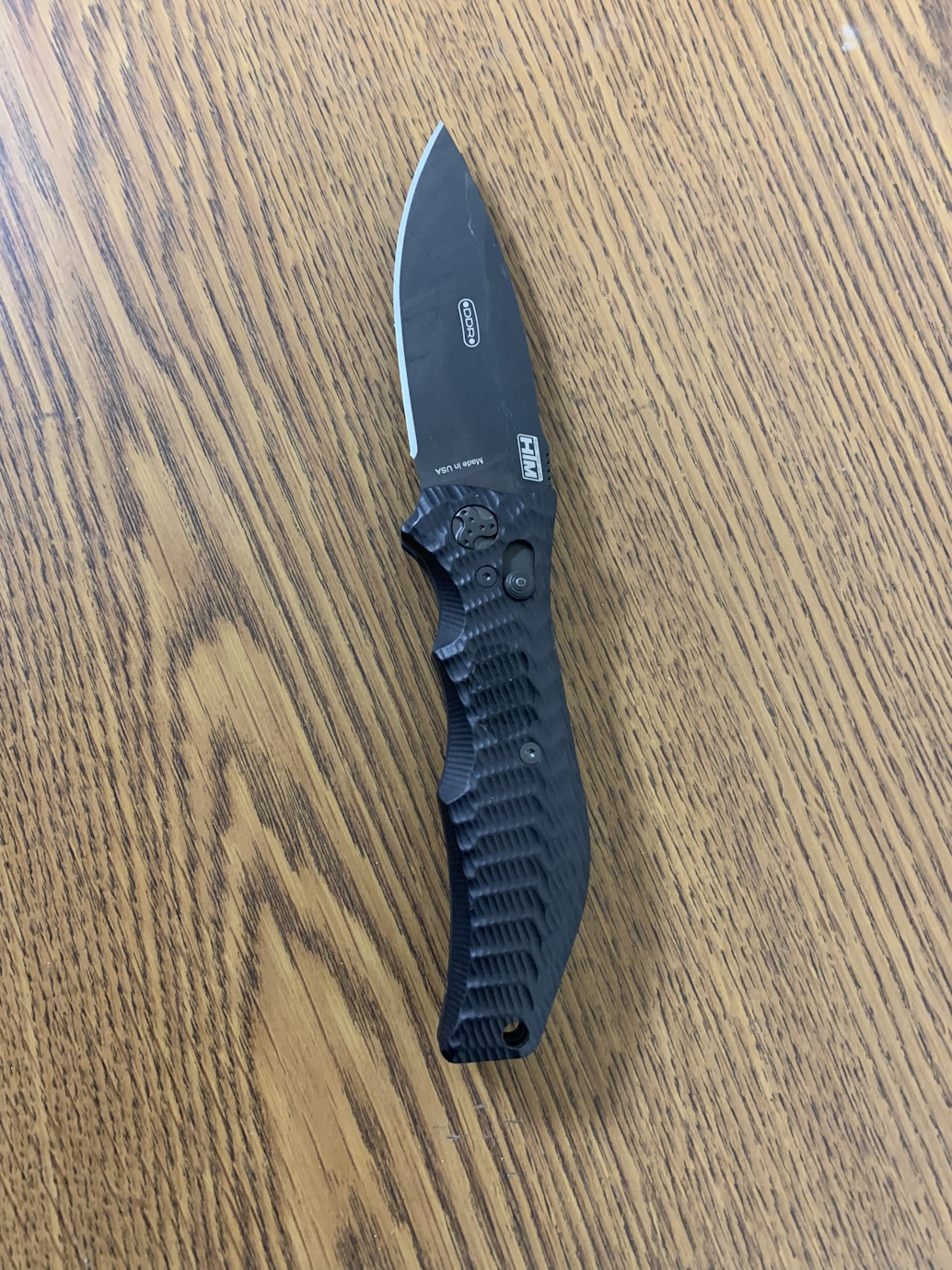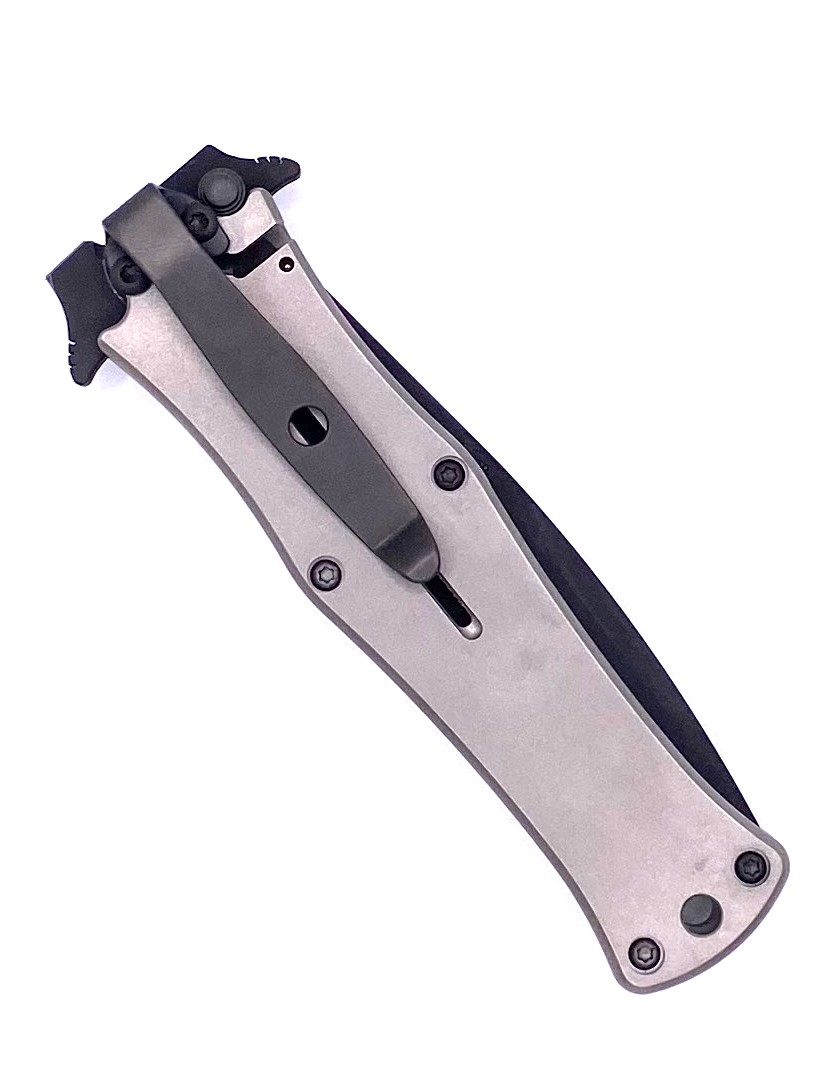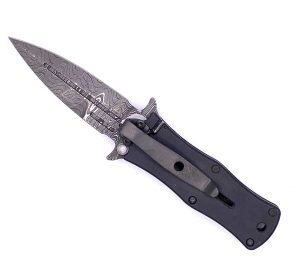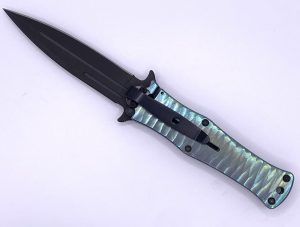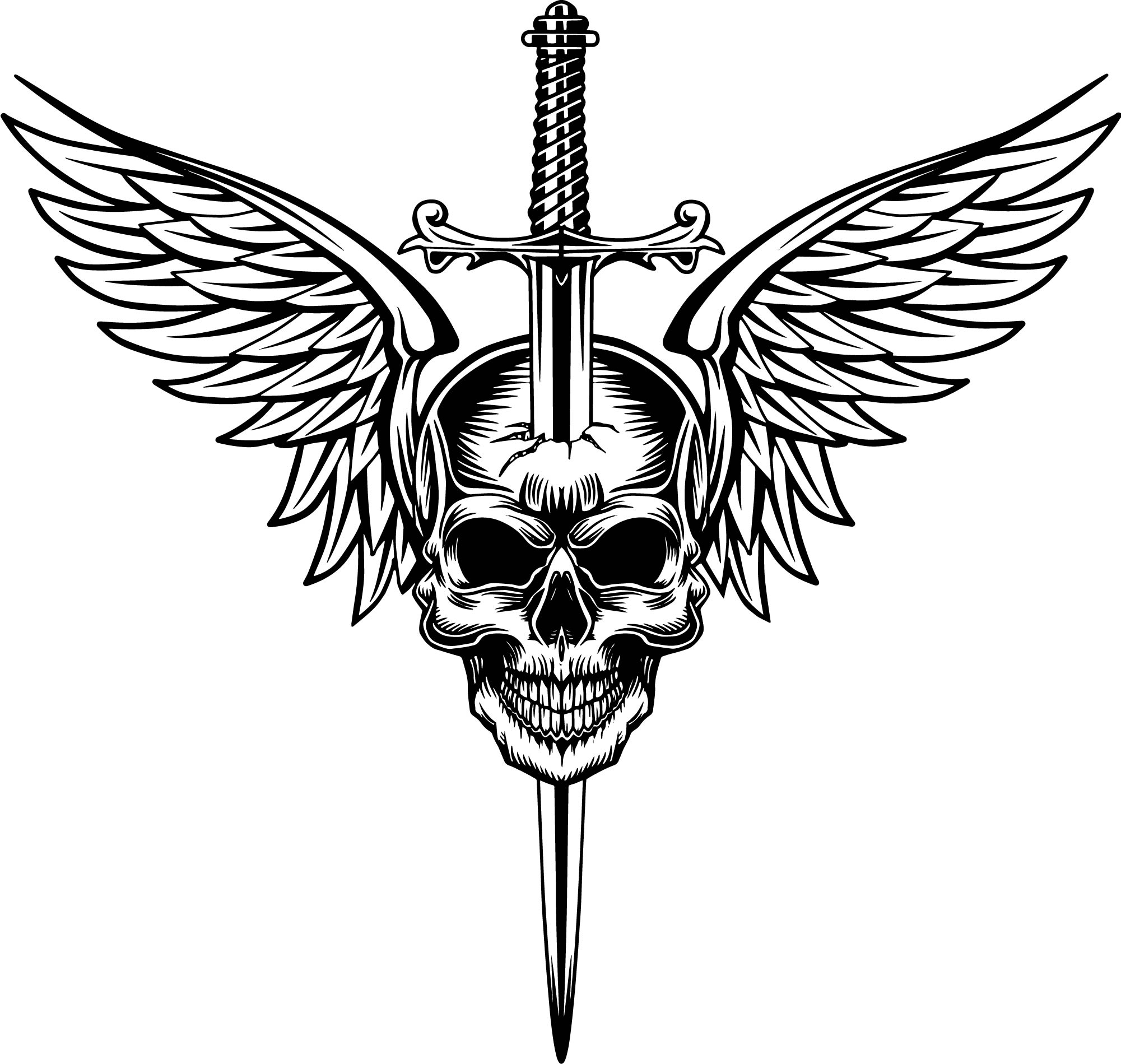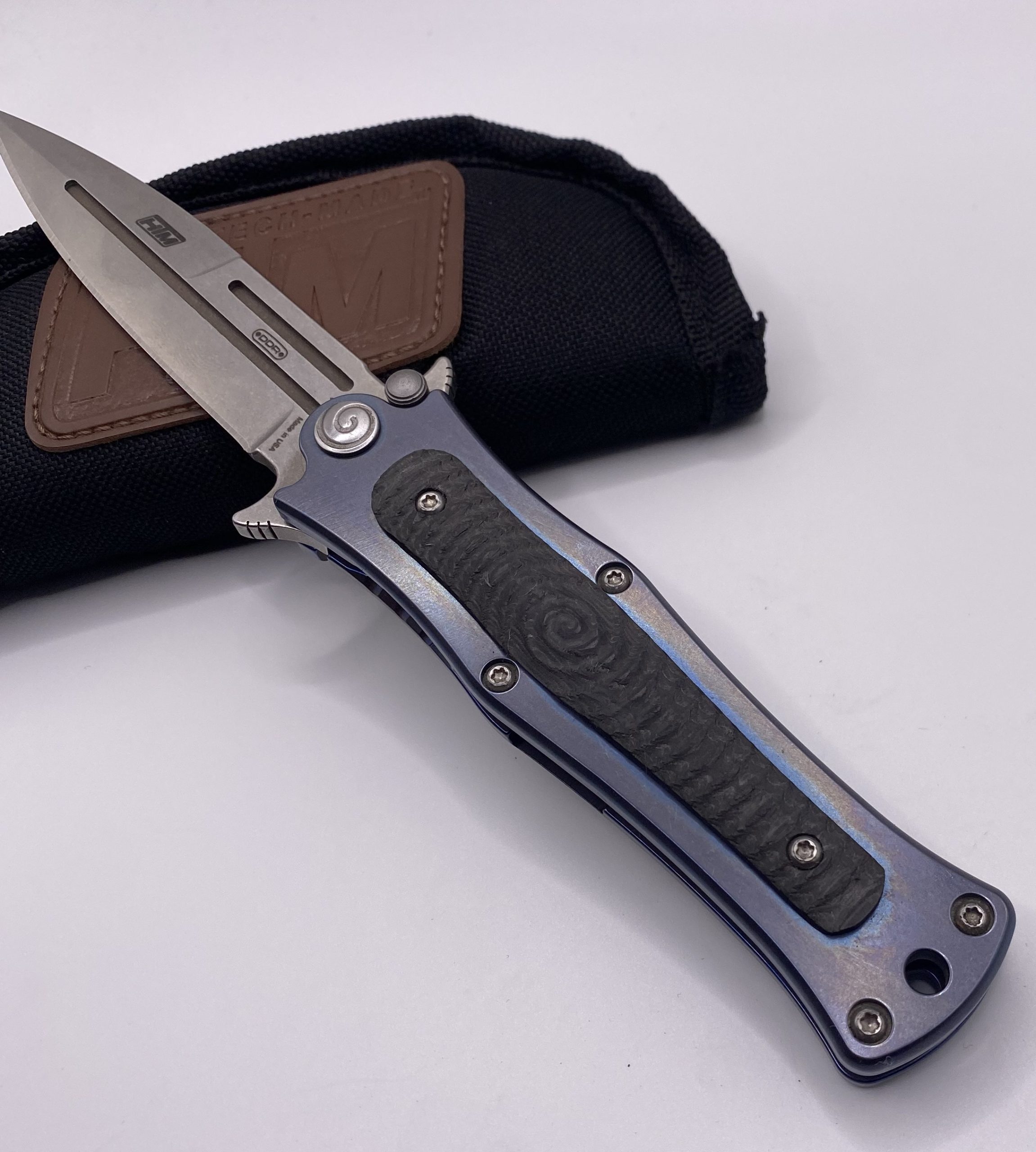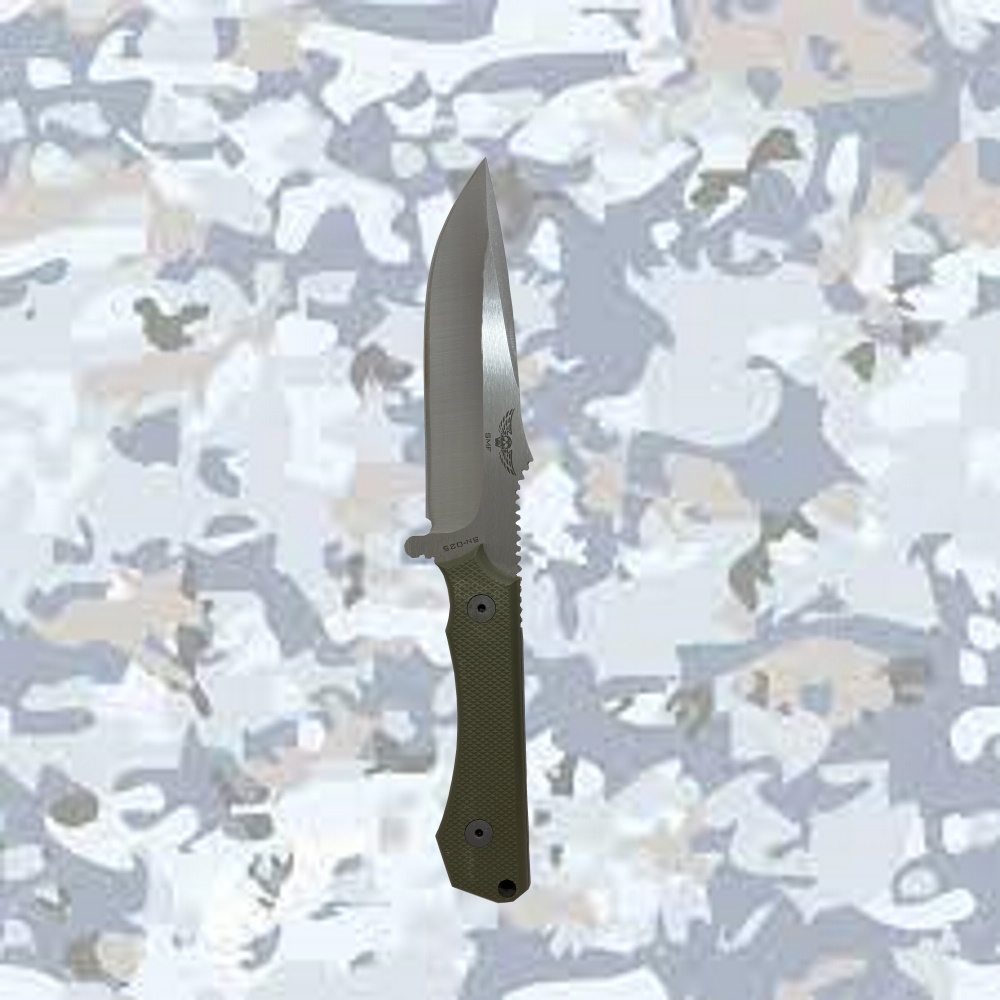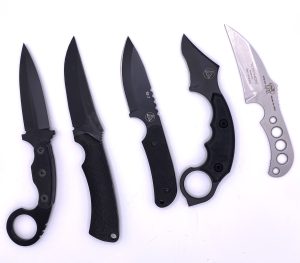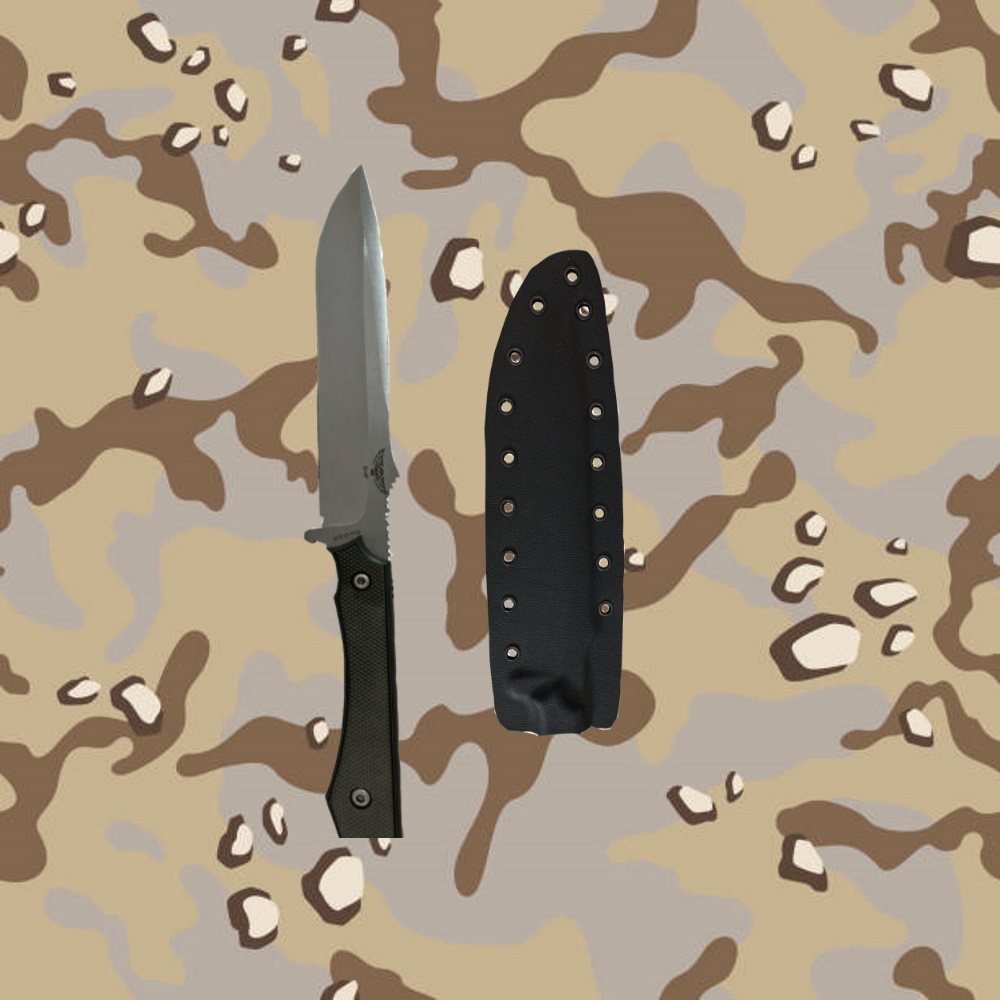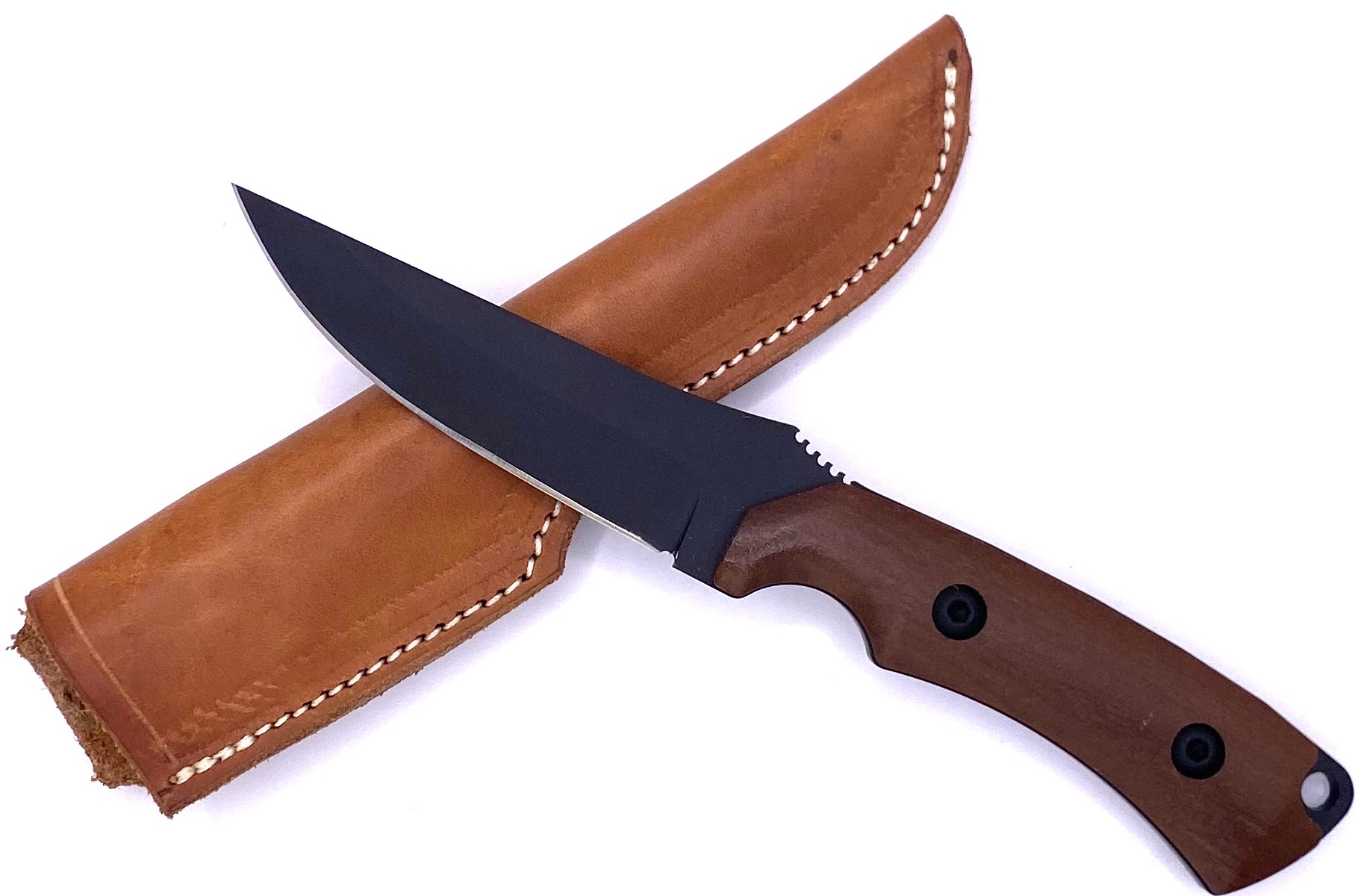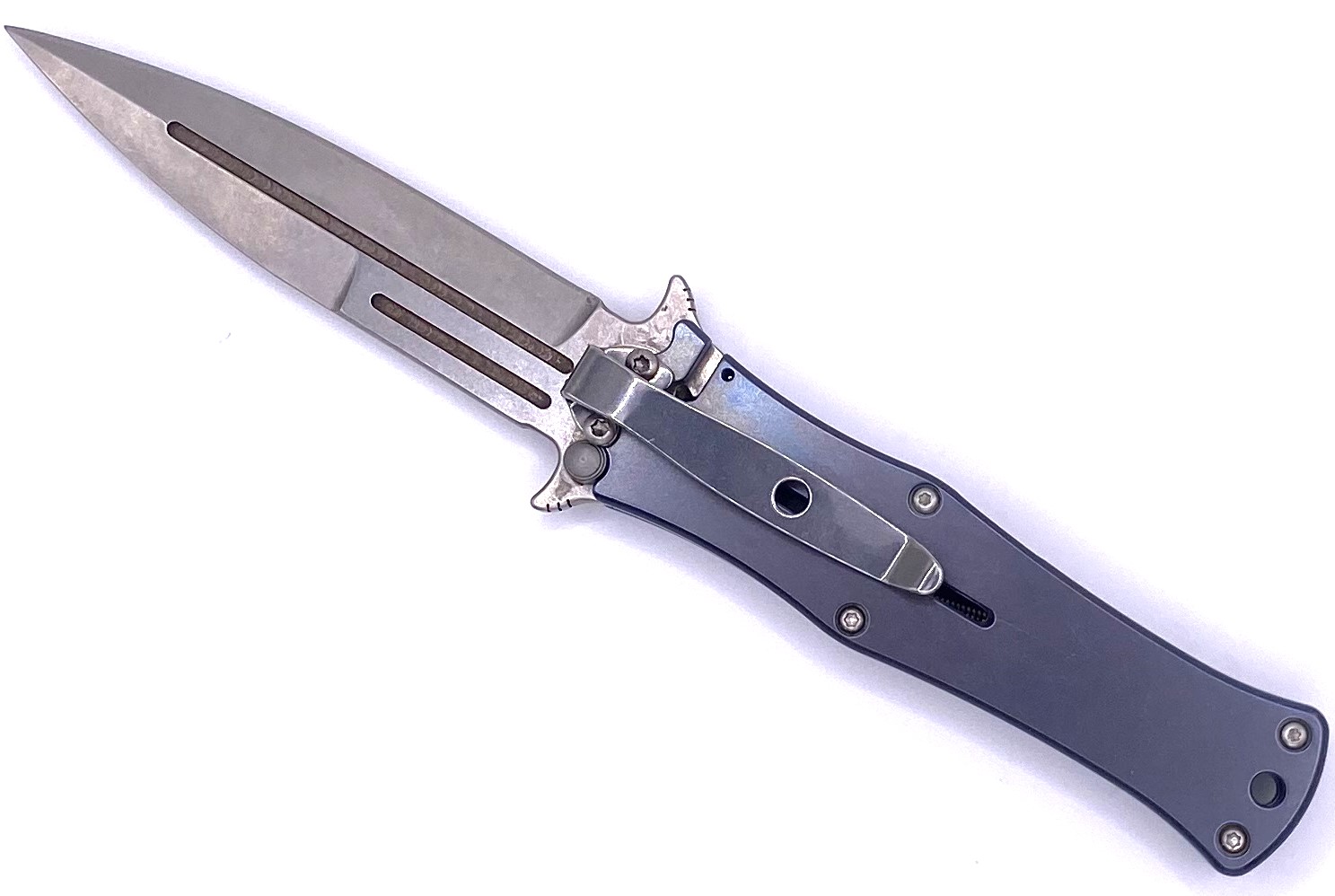
Following up on part 1 of blade styles, custom knives come in a wide variety of blade styles, each designed with specific purposes in mind. The choice of blade style can impact the knife’s functionality, cutting ability, and overall appearance.
The Wharncliffe blade has a straight edge with a spine that drops sharply to meet the point. It provides a strong and straight cutting edge, making it suitable for precise cutting and slicing.
The reverse tanto combines elements of the tanto and drop point blades. It has a straight edge like a drop point but features an angular tip similar to a tanto. This style is often seen in tactical and EDC knives.
The trailing point blade has a spine that curves upward, creating an extended, sweeping point. This design is well-suited for slicing and is commonly found in fillet knives and some traditional pocket knives.
Cleaver blades are characterized by a broad, flat edge with a squared-off tip. They are designed for heavy chopping and slicing tasks, often associated with kitchen and butcher knives.
Commonly found in traditional pocket knives, the spey point features a straight edge and a slightly rounded, blunt tip. It is designed for tasks that require controlled cutting without the risk of piercing.
A variation of the Wharncliffe blade, the modified Wharncliffe typically features a more gradual curve on the spine and a pointed tip. It provides a versatile cutting edge for various tasks.
These are just a few examples, and many custom knives may incorporate a combination of features to create a unique and specialized blade design. When choosing a custom knife, consider the intended use, personal preferences, and the specific advantages of each blade style.
